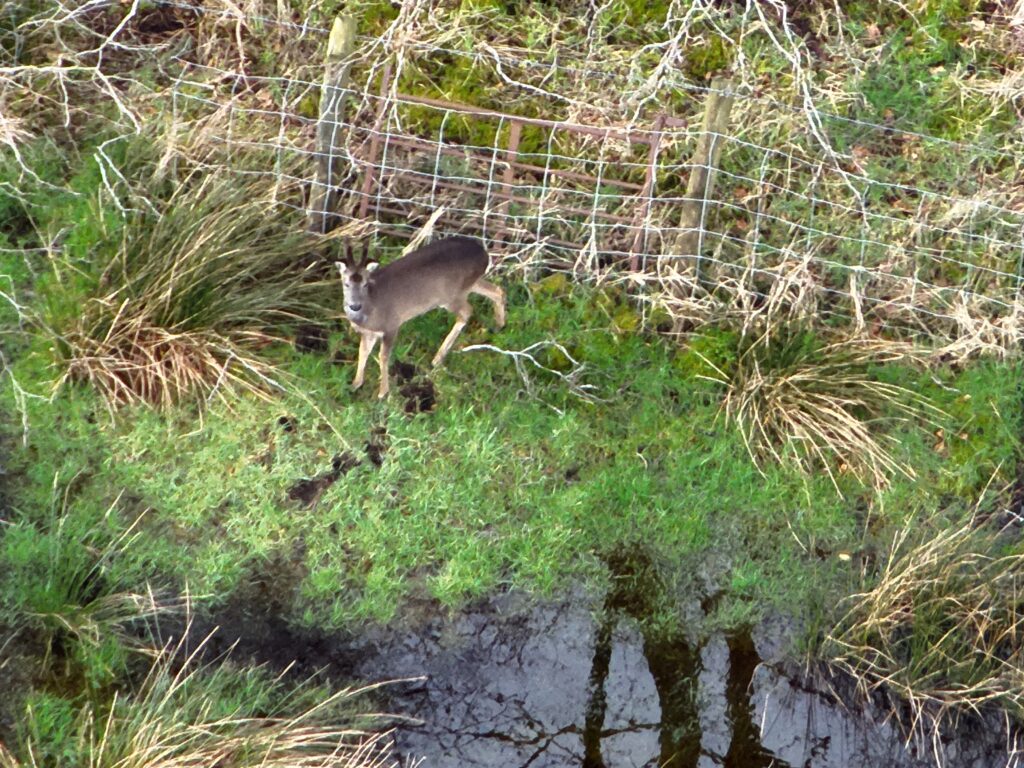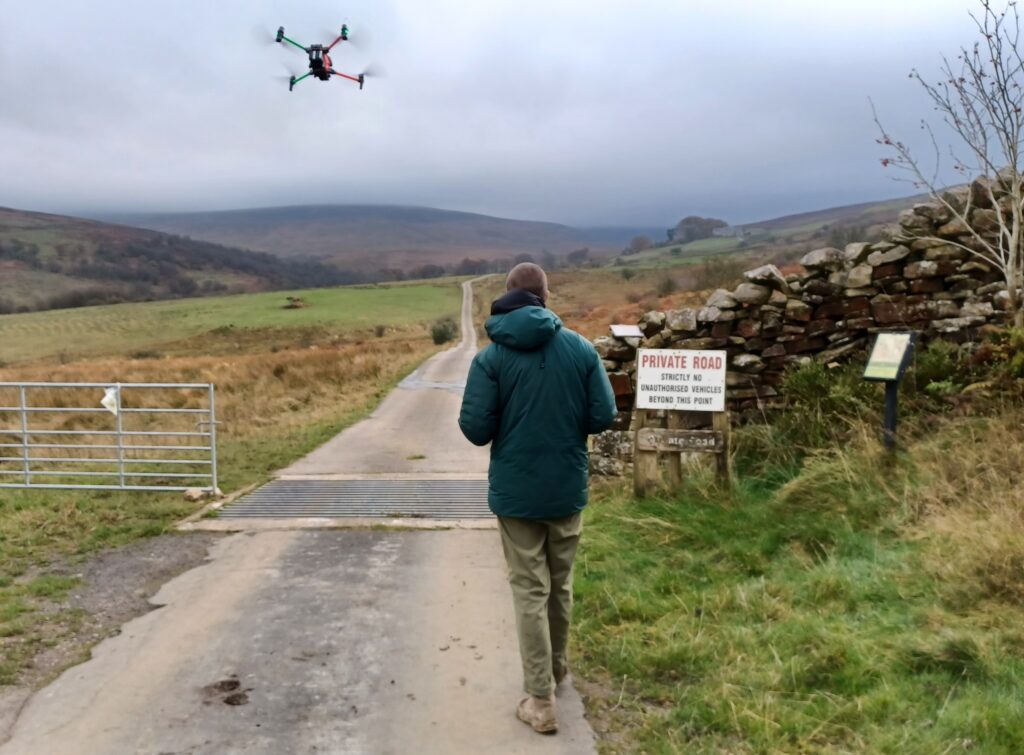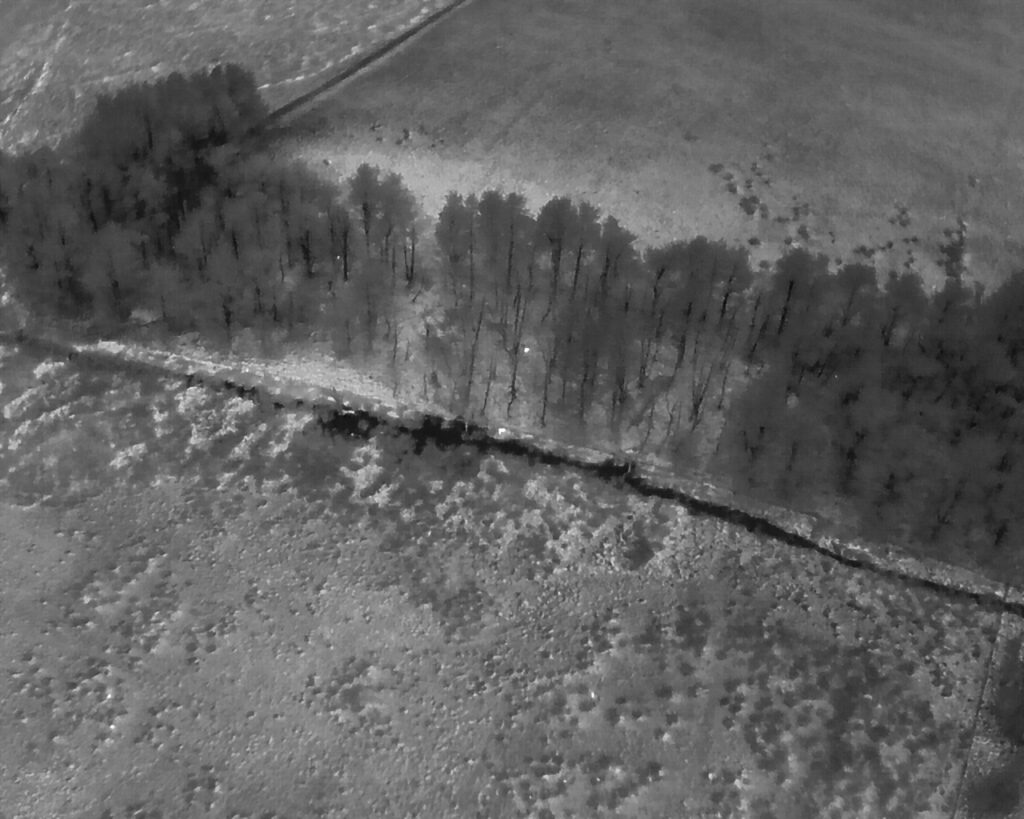News
Deer monitoring using UAVs
29 November 2024
Deer monitoring using UAVs
29 November 2024
The North Pennines National Landscape team has carried out work to monitor the local deer population to achieve better outcomes for tree planting and woodland creation.
The team did an extensive survey using Unoccupied Aerial Vehicles (UAVs) as part of the Heart of the Pennines Forest project, funded through Defra’s Trees Call to Action Fund. It was the first landscape scale deer survey using modern technology in the North Pennines. The Heart of the Pennines project helps landowners to increase tree cover by providing advice, support and access to funding, to ensure the right kinds of trees are planted in the right places. For this project, the team works with partners at Yorkshire Dales National Park Authority and the Yorkshire Dales Millennium Trust, supported by Forestry Commission and Woodland Trust.

To help towards tree planting targets, it was essential to look at the deer population on the western fellside of the North Pennines, where there are recent planting schemes delivered by the North Pennines National Landscape team and their partners. Deer browse on newly planted trees and prevent natural regeneration, making it difficult in some areas to succeed with tree planting. The populations of deer species are at their highest levels in 1,000 years mainly due to there no longer being any natural predators to control numbers. As a prey species, deer reproduce at a higher rate than is needed to sustain population levels.

The team worked with BH Wildlife Consultancy, who specialise in thermal imagery wildlife drone surveys, to find out more about the deer population here in the North Pennines. Surveys were carried out in three different zones, to map the distribution and density of roe deer along the western fellside. The data was recorded quickly in the field to ensure accuracy and limit animal movement.

The survey results indicated low densities of roe deer in the project area but within wooded habitat, numbers were high and are likely to increase as more trees are planted for the Heart of the Pennines Forest project. The team learnt a lot from carrying out the research, recognising that it can take time liaising with landowners and securing permissions to access the land for monitoring purposes at such a scale. Although only a snapshot in time, the results provided really useful information on deer distribution and density.
The team is already considering the impact of deer on their planting schemes. They use plastic tree guards which are tall enough to prevent deer browsing and metal tree cages, which are deer-proof. At some sites in the North Pennines, the team is trialling a plastic-free approach by planting hawthorn in dense clusters. The thorns provide natural protection from browsing. The team is also planting alder, a tree species which is disliked by the deer in the area and grows well in wet conditions.
Following on from the research, the North Pennines National Landscape team will continue to share data on census work and deer impact monitoring with partners, landowners and other stakeholders, such as the Forestry Commission. Further work will be influenced by the Defra-led national deer management strategy which is still in discussion.







